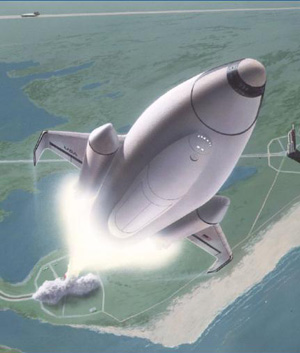About

Participating Schools
|
If you have ever wondered why modern aircraft can carry more passengers and cargo and yet travel longer distances without refueling, or why the modern tennis rackets have a larger frame but they are stiffer, longer lasting, provide more power and als o are lighter than the old steel or wooden rackets, it is because of modern structural materials technology which has led to new and improved materials with higher strengths and higher modulus of elasticity but lower densities. The effectiveness of such materials is realized by comparing the strength to density and elastic modulus to density ratios. Several of these advanced materials are composites which can be engineered to have different properties in different directions giving the engineer more fle xibility in optimizing material usage.
Composite materials consist of fibers, whiskers and particles known as the reinforcement phase in a common matrix. The purpose of the matrix is to provide lateral support to the reinforcements. Both the reinforcement and the matrix phases can be me tallic, ceramic or polymeric. Composites are a major success story in the current age of engineered materials with applications ranging from use in military and commercial aircraft, automobiles, bio-medical implants, highway bridges, buildings, appliance s, golf clubs, skis, tennis rackets and fishing poles. The words that have become synonymous with structural composites are high performance, light weight and tailored properties.
The use of man-made composite materials is not entirely new considering that straw-reinforced mud bricks, and silk and animal tendon laminated bows were used several centuries B.C. Nevertheless, the history of modern composites is relatively recent . Several major advancements in composites have occurred as recently as in the nineteen seventies and eighties. The field continues to be dynamic with new materials being developed even today. Virtually all technology forecasts from both industry and government consider the ability to produce composite materials and structures economically as being critical for future defense needs and also for industrial competitiveness in a global economy. The U.S. Department of Defense alone spent over a billion dollars in composites research during the five year period ending in 1991. The challenge for the next ten years is to effectively utilize this technology for new commercial products. The national project on High Speed Civil Transport (HSCT) is an examp le of projects that depend on exploiting the superior strength and temperature capabilities of composite materials. Therefore, composites will continue to be an exciting field of research for several years to come.
The Schools of Aerospace, Civil, Chemical, Materials Science and Engineering, Mechanical, and Polymers, Textiles & Fibers Engineering and the Georgia Tech Research Institute (GTRI) have active research programs in composites. The Composites Education and Researc h Center (CERC) is one of the multidisciplinary centers that operate through the Office of Interdisciplinary Programs (OIP) at Georgia Tech. CERC's mission is to provide a forum for a multidisciplinary, yet cohesive, education and research opportunities in composites for engineering undergraduate and graduate students. In all, twenty nine faculty members from the participating departments are affiliated with CERC. Such large numbers of faculty with expertise in composites is unique among universities a round the world and makes it possible for the Georgia Tech composites program to be very complete in all aspects of this critical technology.
Return to top
|

